James Bond Alps locations a journey through film history
Follow in James Bond’s footsteps in the Alps, with no need for death-defying stunts.
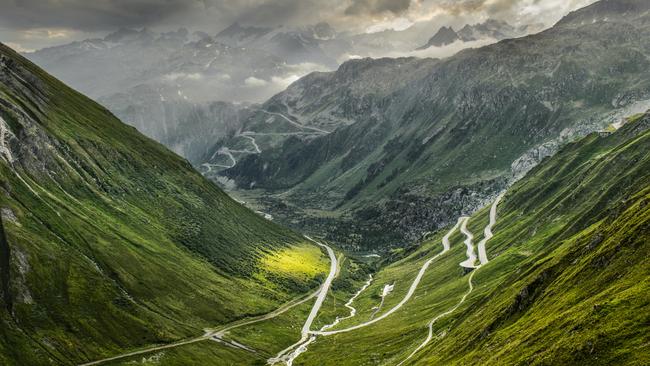
Welcome James, it’s been a long time ... and finally here we are.” So says Bond uber-villain Blofeld in the 2015 film Spectre, and the same words greet me from a cinematic installation when I arrive at 007 Elements, a stunning new “visitor experience” that opened in July at the top of a 3km-tall Austrian mountain.
With its sleek concrete interiors, film props and panoramic views, it’s the perfect spot for remembering the significance of the Alps in Bond’s backstory and also in that of his creator, Ian Fleming. As a young man, Fleming attended the Tennerhof School in Kitzbuhel, fell in love with the mountains and became an accomplished skier. He wrote short stories in which he featured as the hero, before going on to stay in Geneva. There he became fascinated by what lay behind the conservative facade of Swiss society and specifically where the gold was stashed.
“You can see the Bond novels, written much later, as a kind of wish fulfilment [and] the adventurous life that a young Fleming might have imagined for himself,” comments Peter Walty, author of James Bond und die Schweiz (James Bond and Switzerland). No wonder this romantic, often dangerous world featured so prominently in the stories.
The producers of the Bond films, EON, have faced turmoil in recent weeks after Danny Boyle quit as director of the next movie in the franchise. However, they helped me devise a driving route to 007 Elements, taking in some of the most memorable locations from what is now the longest continuously running film series in cinema history.
I start out from Zurich in the latest Range Rover model, the hybrid Autobiography. Four-wheel-drive vehicles are favoured by the location managers. ‘“You sit high up, giving good visibility when out scouting,” explains Emma Pill, the supervising location manager for Spectre, “and there’s room for equipment, too.”
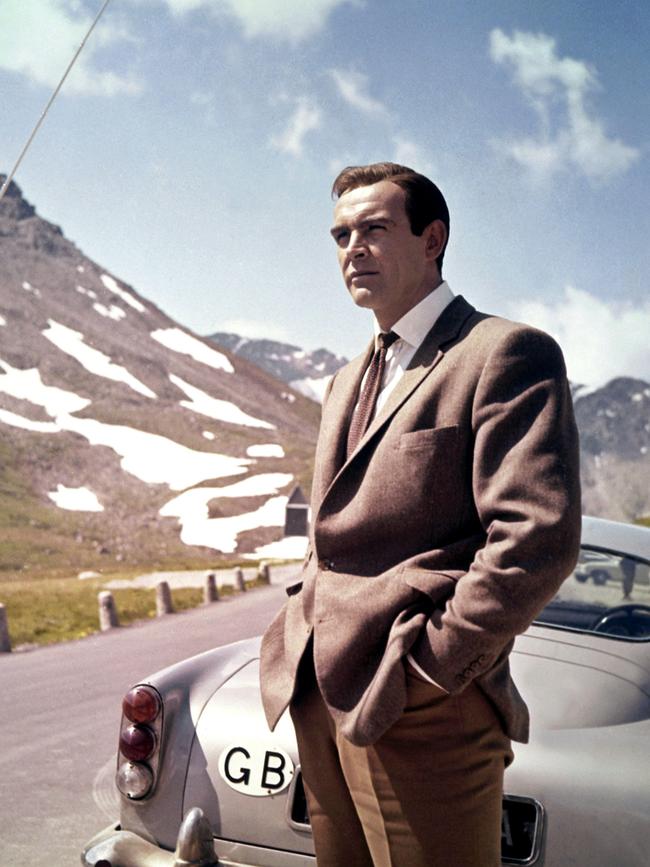
This low-emission hybrid model feels additionally appropriate given the air cleanliness in the Alps. Still, I can’t avoid paying homage to the Aston Martin DB5 that helped put Bond on the map with Goldfinger (1964). Michael Speh, a property dealer living on the south shore of Lake Zurich, has one of only 30 DB5 saloons originally painted silver birch. “It was a barn find,” recounts Speh, like a lottery winner, as he shows me the car. “I bought it from a client of mine near Lausanne who kept much of it in pieces, in wine cases. It needed to be completely restored. Everyone points camera phones when I’m out in it, but to me the key thing is the beauty of its form, its pedigree.”
I glide south in my hybrid car through vivid green meadows dotted with rustic chalets. Next stop is the Pilatus Aircraft factory in Stans on the far side of placid Lake Lucerne. It doubles as Goldfinger’s smelting works in the film. The factory building is surrounded by newer ones, yet it is still recognisable, as is the hill behind, from which Bond, played by Sean Connery, spies on the complex. “Nobody here knew who James Bond was when the film was made in 1964,” says Jerome Zbinden, executive assistant to the chairman. “Today, with any visiting group, someone asks about Goldfinger ... always.”
This factory complex manufactures the Pilatus Porter PC-6 — the pilotless plane intercepted in mid-air by Pierce Brosnan’s skydiving Bond during the opening sequence of GoldenEye (1995). From Stans, you can drive an hour southwest via Interlaken to Stechelberg and take a cable car up to Piz Gloria, the famous mountaintop revolving restaurant serving as Blofeld’s lair in On Her Majesty’s Secret Service (1969), which was George Lazenby’s one take on Bond. I stay on the Goldfinger trail, cruising south on the A2 motorway towards the mountain town of Andermatt. Helpfully, satnav directions and speed are reflected on the Range Rover’s windscreen, meaning I can enjoy the views of the Urner Reusstal valley.
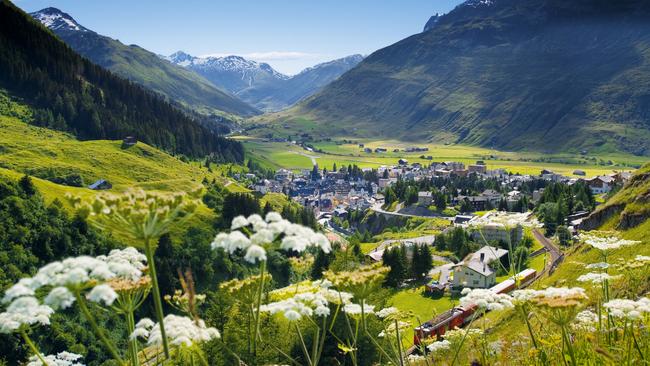
An Alpine crossroads, Andermatt connects several of the most dramatic mountain pass roads in the world. If you drive about 10km west along the Furka Pass, past Realp, you will find a series of hairpin bends used for the camera pullback that reveals Tilly Masterson firing her rifle at Goldfinger, narrowly missing Bond and the DB5.
The area is of military importance, filled with fortresses and bunkers, but it has also been popular with British tourists down the centuries. JMW Turner, Arthur Conan Doyle and Queen Victoria all visited. The Bellevue Hotel, beloved by Victorians, is now the five-star Chedi Andermatt. It features a Michelin-starred restaurant, a driver’s package with car choices that include a Morgan, and the kind of striking architecture that caused location scouts from Spectre to take a look (it did not have the mountaintop setting required by the brief, however).
It was the cast of Goldfinger that made the biggest impression on older locals here. Connery stayed in Room 21 of the down-to-earth Bergidyll Hotel. The modest, pinewood-walled guestroom appears little changed, apart from the film posters. It is now a pilgrimage site for Bond fanatics. Further along the main street, I dine at Gasthaus zum Sternen, known for its hearty goulash and apple strudel. Don’t neglect the homemade schnapps. I learn the restaurant is owned by a Dr Stabler. A production call sheet for July 8, 1964 reveals him to have been “first aid/interpreter” on the set. Others here recall Connery out-drinking the locals at night.
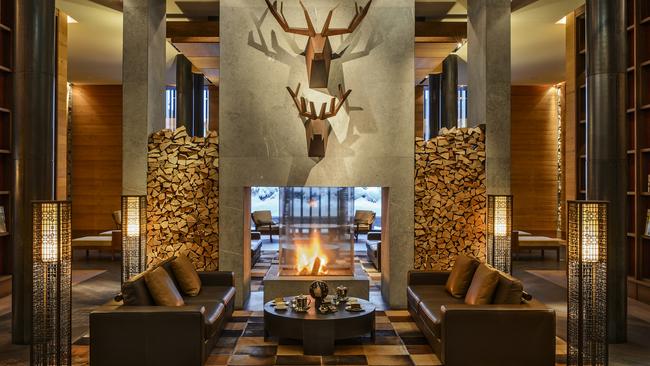
The impression is one of a low-key, gentlemanly film-making endeavour, yet, with the lower budget, production pressures couldn’t have been so different from today. There is nothing calming about the following morning’s location. A 90-minute drive south via the Gotthard Tunnel (you can take the Gotthard Pass in good weather) brings me to a connoisseur’s choice of Bond locations at the Verzasca Dam near Locarno. The opening scene of GoldenEye sees Bond swan dive down the swooping, 220m-high concrete face. The stunt took a week to prepare. A call sheet dated March 14, 1995, demands a 70-ton crane to hold the bungee rope far enough from the concrete face to prevent the stuntman smacking into it on his way down. Englishman Wayne Michaels did the stunt in one take. A local trekking company lets you recreate the bungee jump, but jumping parallel to the dam face instead of straight out in front.
I’m content to drive on to St Moritz without tricking my body to fly. The Range Rover is as gadget-laden as a Q-branch prototype; the hot stone massage offered via the seat controls is a welcome touch. Soon I’m traversing the Julier Pass with its postcard-perfect green hills, high waterfalls and jagged, snow-capped peaks. On the far side near St Moritz, I rendezvous with Leo Blattler, a mountain guide for the unit that delivered another heart-stopping opening sequence — the ski chase scene in The Spy Who Loved Me (1977), culminating with Bond skiing off a cliff and opening his Union Jack parachute.
Blattler is on the call sheet dated January 17, 1977. The “set” is indicated as the Corvatsch cable car top station, but that was just a pickup point for helicopters ferrying crew to the glacier beyond, Blattler explains. He now leads tours in the area and suggests going to the top station of the neighbouring Diavolezza lift, which provides a panorama of the peaks that include the tallest in the eastern Alps, Piz Bernina, at 4050m.
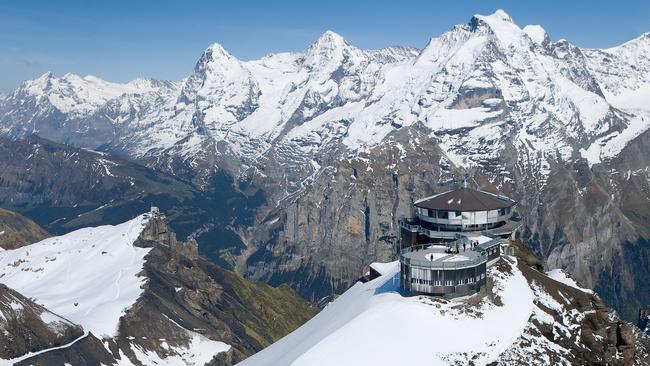
Most of the sequence was shot behind this range but the parachute jump was filmed in northern Canada. Bond somersaults and skis backwards to fire at his pursuers using a special ski pole, which I soon discover is among the props on display at 007 Elements.
I drive north on Route 27 towards Innsbruck. Robert Maillart, a revered Bernese engineer, designed the elegant and innovative reinforced concrete bridge over the Inn River at Zuoz, one of several such structures by him to grace the Swiss landscape; look out for it on the left as you drive by the village. Soon I enter Austria and the flat floors of the steep-sided Tyrolean valleys. Lodging for the night is the five-star Das Central hotel in the town of Solden, setting me up for the trip finale.
In Spectre, Bond tracks Dr Madeleine Swann, played by Lea Seydoux, to the mountaintop Hoffler Klinik. Bond doesn’t take well to the absence of alcohol, the digestive enzyme shakes or indeed the security staff. In reality, this stunning transparent building is the “ice Q” restaurant at the 3000m-high summit of Gaislachkogl Mountain, offering fine dining and even a red wine designed to taste good at this altitude — PINO 3000. You take the cable car up from Solden, but be sure to book a table in advance.
Open next door is 007 Elements, the visitor experience I have driven all this way to see. Buried in the mountaintop like a Bond villain’s lair, its temperature is kept at 1C to avoid any complications with the permafrost foundation. During my visit, Neal Callow, an art director on all of the Daniel Craig films, is on hand to explain the influence of Ken Adam, the legendary production designer who worked on the first Bond films. Interactive exhibits show how the action sequences from Spectre, shot in the area, were choreographed.
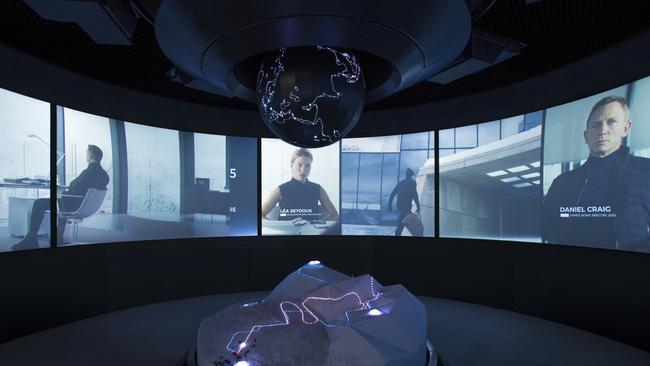
My Alpine odyssey culminates in a helicopter ride. What else? They featured early and often in the films, and are sometimes the only way for crew to get around. We sail over the Glacier Road where Bond flies a prop plane alongside the villain’s convoy of specially modified Land Rovers and Range Rovers. The ice tyres of those needed studding by hand, each tyre requiring 1500. It’s almost too much; I’m in danger of sensory overload. Warning! Warning! But there are to be no barrel rolls like at the beginning of Spectre. The sky is perfectly clear, and the surrounding peaks and glaciers look spectacular. This truly is 00-Heaven.
TELEGRAPH MEDIA GROUP
-
IN THE KNOW
007 Elements visitor experience opened on July 12; entry €22 ($36) adults; €12 children. Pilatus Aircraft factory tours are free but for groups of 10 only. Verzasca Dam bungee jumps cost about $350 a person. Twenty-minute scenic helicopter tours from Solden are €730 for up to four passengers.
